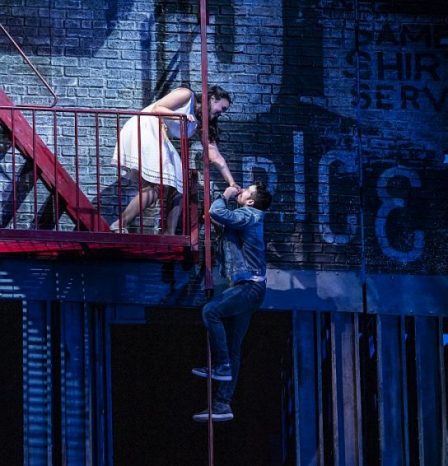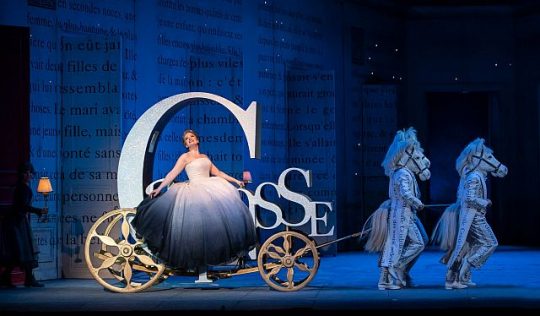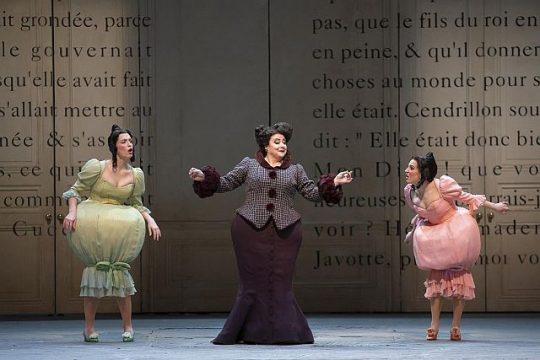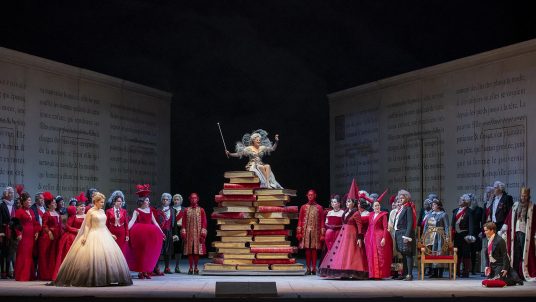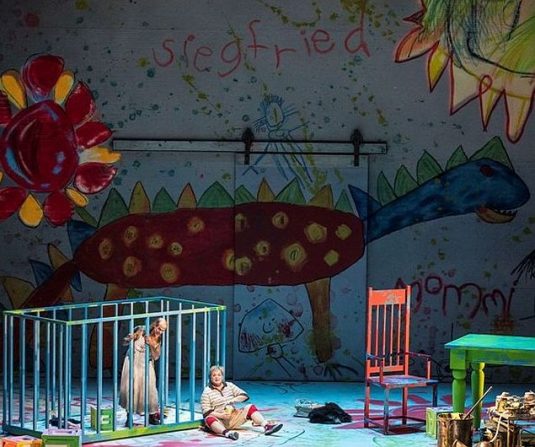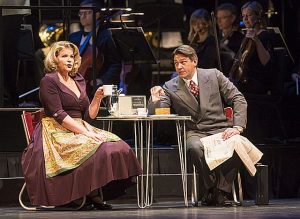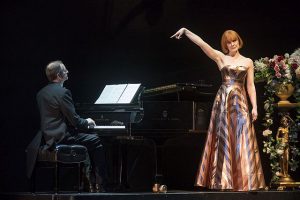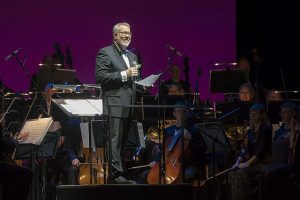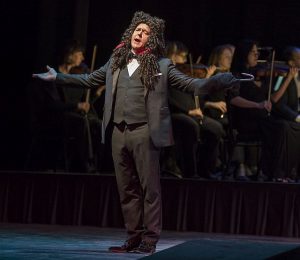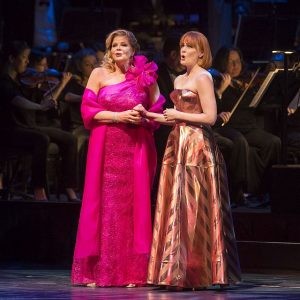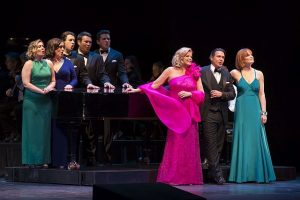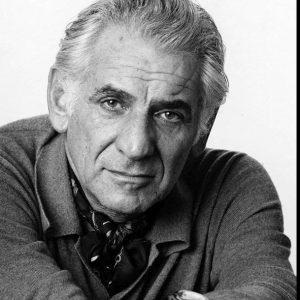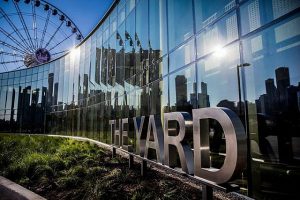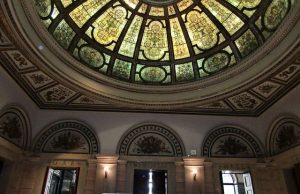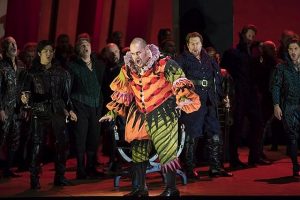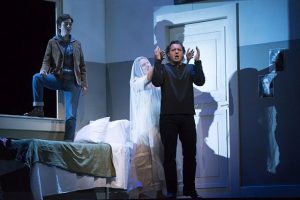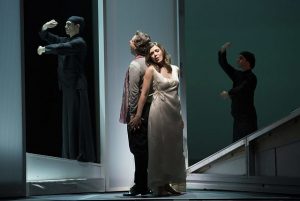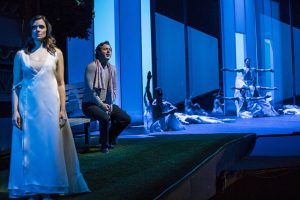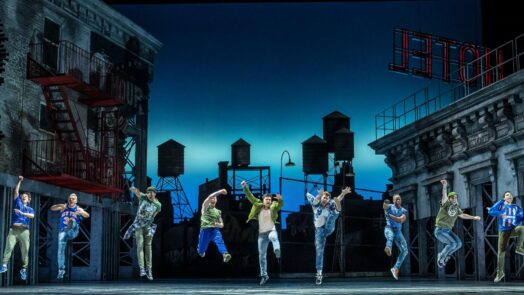
Highly recommended
For a professional theater experience in Chicago this month you can’t do much better than West Side Story at the Lyric Opera. This Leonard Bernstein / Stephen Sondheim musical deemed cutting edge and somewhat avantgarde when first introduced, is now a classic.
The story by Arthur Laurents is a rather faithful mid-century modern adaptation of Shakespeare’s Romeo & Juliet. Rival teenage street gangs, the Sharks and Jets, battle in New York City streets to maintain what they feel is control of this small piece of Manhattan. Caught in the crossfire of this conflict are Tony (Ryan McCatan) and Maria (Kanisha Feliciano) two tragic lovers from opposite ends of the divide.
The production is a natural for this venue. West Side Story leans more toward opera as the story is told primarily through song, with many that found a firm foothold in the Great American Songbook, such as Maria, Tonight, and One Hand One Heart. They are augmented by the accompaniment of a full live pit orchestra led by conductor James Lowe, a rare treat that would likely not be included in a smaller company.
Director Francesca Zambello has largely remained faithful to the original production directed and choreographed by Jerome Robbins that includes a substantial amount of modern ballet, executed here by choreographer Joshua Bergasse and the production ensemble. The Lyric’s massive Civic Opera House stage gives the dancers ample room to move.
The set design of Peter J. Davison featuring the iconic fire escape, towers over the audience. When Maria sings Somewhere to Tony as they embrace on the balcony while the dance company interprets her message of hope below, the scale of the proscenium provides an opportunity to suggest both the intimacy of the lovers as well as the suggestion of a world beyond.
The depth of the stage allows for a glimpse of the larger city, amplifying the claustrophobic feelings of the gang members whose view of the world is so limited they can not see further than their small neighborhood and the immediate “problems” that they largely have created themselves.
The story of street violence, turf warfare and ethnic battles are all too familiar in today’s environment illustrating that these often-deadly disagreements are nothing new, and difficult if not impossible to eradicate from our communities.
The “Gee, Officer Krupke” musical number comically reminds us of the continuous effort to understand and curb youthful anti-social behavior including psychology, sociology, and criminology as well as the conditions that lead to “delinquency.” Our mothers all are junkies / Our fathers all are drunks / Golly Moses, naturally we’re punks!
In America, Anita (Amanda Castro) and Rosalia (Joy Del Valle) expose the promise versus the realities of “The American Dream,” while in The Jet Song, Riff (Bret Thiele) and The Jets express the perceived value they get from being part of a gang.
I was happy to see a number of young people and children at the matinee performance I attended but caution parents to keep in mind that not all musicals are written for a Disney audience
In the nineteen-fifties and sixties there was a decisive movement to create musical theater with mature themes. Some of these included Carousel and Oklahoma (both of which have been staged at the Lyric) depicting or suggesting domestic abuse, murder and rape. This trend has continued and expanded since then, proving that the American Musical has a place in high art because it has the ability not only to entertain but also to inform, reach us emotionally in a profound way and expand our thinking.
The original West Side Story production ensemble of Laurents, Bernstein, Sondheim, and Robbins with Robert Griffith and Harold Prince did not shy away from difficult topics and instead embraced the trend by exposing the challenges related to depicting racial conflict, disaffected youth, street gang violence, murder and death, through music and dance.
West Side Story is a tragic love story that ultimately encourages us to be more tolerant and thoughtful as to how we perceive, judge and react to each other, particularly those with whom we have perceived differences. It is suggested that there is space for everyone if we open our hearts to each other.
Details: West Side Story is at the Civic Opera House, 20 North Wacker Drive, Chicago, through June 25, 2023. Running time is 2 hours and 30 minutes with one intermission. For tickets and information visit LyricOpera.org
Reno Lovison
For more shows visit Theatre in Chicago

